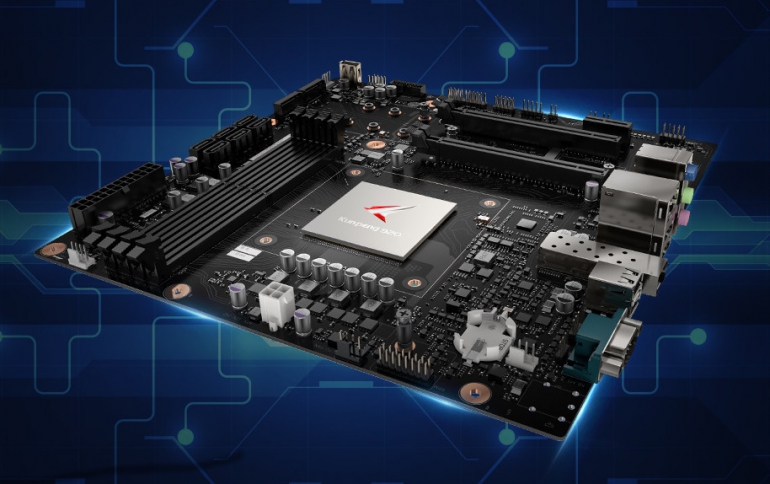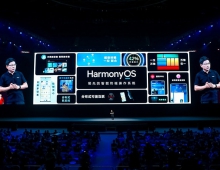
Huawei Unveils PC Motherboard for Kunpeng 920 ARMv8 Processors
Chinese Huawei has unviled details about a new desktop PC motherboard that is designed work with the company's Kunpeng ARMv8 processors, typically found in servers.
Developed based on the Huawei Kunpeng 920 processor, the Kunpeng desktop board is compatible with mainstream hardware such as memory, hard drives, and network interface cards (NICs). It supports the Linux desktop operating system and provides reference design for chassis, heat dissipation, and power supply.
Huawei also offers some metrics for performance, reliability and power efficiency with “56 Gbit/s high-speed SerDes (HSS) for 25% higher motherboard performance”, a “signal bit error rate (BER) lower than 10-12 for 15% fewer failures than the industry average” and an “Innovative Dynamic Energy Management Technology (DEMT) for over 15% better efficiency than the industry counterpart”.
The 7nm Kunpeng 920 processor of the motherborad comes with 4/8 cores & 2.6 GHz, but can scale up to 64-cores and support PCIe 4.0 for the full-fledged server models. These chips come armed with 20 billion transistors spread over three dies in a multi-chip module, indicating there is scalability, and support up to DDR4-3200 and 40 lanes of the PCIe 4.0 interface, not to mention support for the CCIX protocol, meaning these chips rival AMD's market-leading desktop silicon in terms of connectivity. The full-featured 64-core chips have a relatively tame 180W TDP.
According to the posted specifications, the Kunpeng Desktop Board D920S10 supports the PCIe 3.0 interface, six SATA 3.0 hard interfaces, and two M.2 SSD slots. Memory consists of a quad-channel DDR4-2400 interface that supports a maximum of 64GB of capacity, and the board supports ECC, too. It also has an embedded Ethernet controller and supports additional networking cards up to 25 GbE. For mundane everyday connectivity, the motherboard also supports four USB 3.0 and four USB 2.0 ports, giving it all of the requirements for a desktop PC.
The trade war between the US and China could accelerate China's plan to produce its own processors. Over the years, actions by the US have largely prevented China from achieving the technical know-how and equipment to develop its own chips through acquisitions and mergers. However, the Chinese companies, with funding from organizations heavily tied to the government, recently tried to break into the x86 processor realm through a partnership with AMD that ended when the US government added it to the entity list. China is still working to produce x86 chips through a partnership with VIA and local companies have become increasingly interested in adopting ARM architectures.
Huawei's HiSilicon chip maker is reportedly the largest consumer of TSMC's 7nm silicon that is in high demand by other indutry players, including Apple, Nvidia, and AMD.
| Specifications | |
| Board Model | D920S10 |
| Processors | 1 Kunpeng 920 processor with 4/8 cores & 2.6 GHz |
| Internal Storage | 6 SATA 3.0 hard drive interfaces, 2 M.2 SSD slots |
| Memory | 4 DDR4-2400 UDIMM slots, maximum capacity 64 GB |
| PCIe Expansion | 1 PCIe 3.0 x16, 1 PCIe 3.0 x4, and 1 PCIe 3.0 x1 slots |
| LOM Network Ports | 2 LOM NIC, supporting GE network ports or optical ports |
| USB | 4 USB 3.0 and 4 USB 2.0 |





















